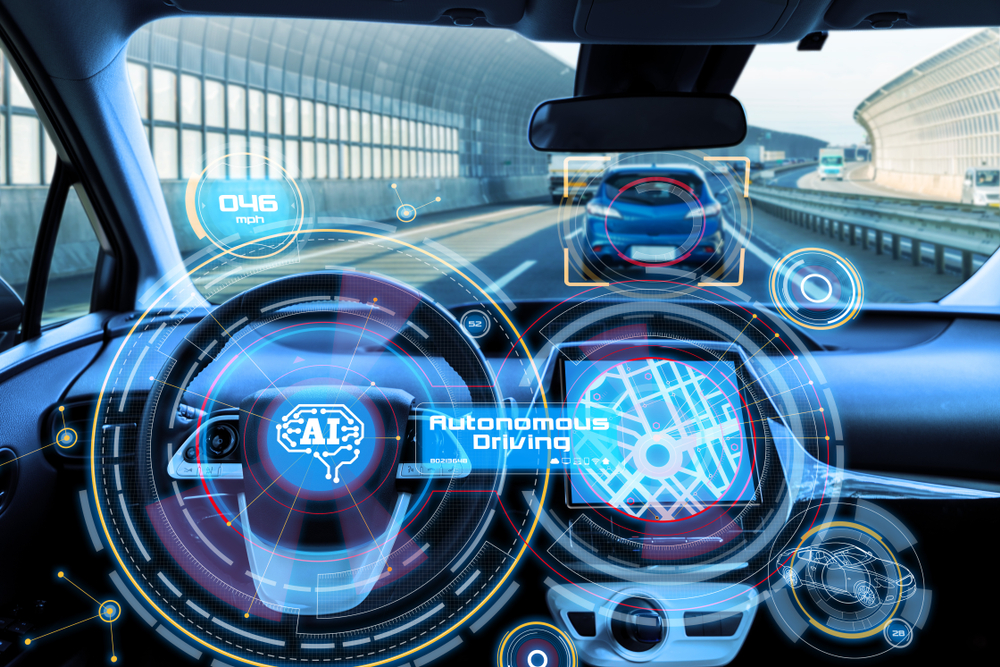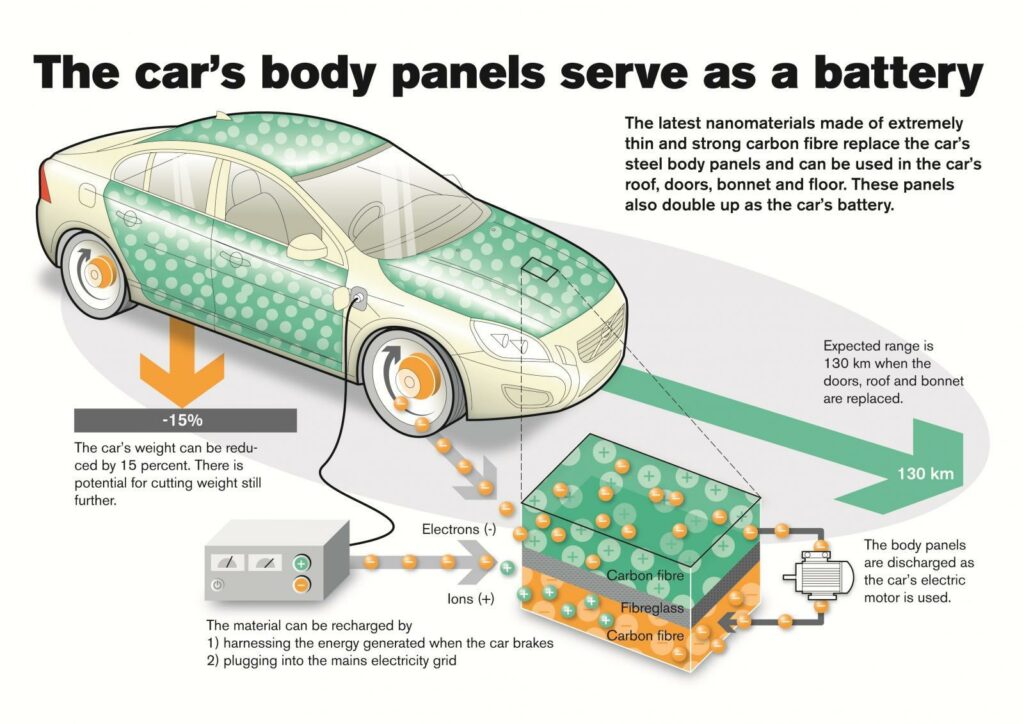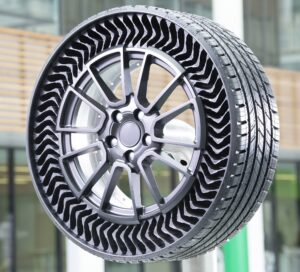
Artificial Intelligence Autonomous Vehicles Augmented Reality
Energy Generating Panels Airless Tyres Vehicle-to-Vehicle Communication Recycled interiors
AI Cars
AI Cars stands for Artificial Intelligence. It refers to developing and deploying computer systems or machines that can perform tasks that typically require human intelligence. Cars with AI aims to simulate human intelligence processes, such as learning, reasoning, problem-solving, perception, and decision-making in vehicles.
Artificial Intelligence encompasses various techniques and approaches, including machine learning, natural language processing, computer vision, robotics, and expert systems. These technologies enable machines to analyse and interpret vast amounts of data, recognise patterns, make predictions, and adapt to changing circumstances.
Different Types of AI Cars
AI can be categorised into two main types: Narrow AI and General AI;
Narrow AI, also referred to as weak AI, is designed to excel in specific tasks such as facial recognition or voice assistants.
In contrast, General AI, also known as strong AI or AGI (Artificial General Intelligence), can possess human-like intelligence, enabling it to comprehend, acquire and apply knowledge across different domains.
Artificial Intelligence has quickly become an integral part of modern motor car production by using robots and algorithms for manufacturing more efficiently, producing better quality control, and optimising the supply chain and even virtual design.
AI for Cars – Autonomous vehicles
Since 2008 Tesla has been one of the leaders in automotive AI adoption as the world transitions into electrification. Indeed, one of the most popular features of Tesla is the AI-powered interior camera, which makes the cabin safer.
Using AI technology, the camera can detect and monitor the eyes of the driver, determine if they’re drowsy, and prevent on-road accidents.
Self-driving vehicles use a range of sensors, including cameras, lidar technology, radar, and ultrasonic sensors, to collect information about their surroundings.
AI algorithms analyse collected data to generate a detailed map and identify objects like pedestrians, vehicles, and road signs.
What’s the Benefit of AI Cars?
There are several benefits to self-driving cars. For one, they have the potential to reduce the number of accidents caused by human error significantly.
This could lead to fewer deaths and injuries on the road. One potential benefit of self-driving cars is the potential improvement of traffic flow and reduction of congestion. These vehicles have the ability to communicate with one another and make real-time decisions to optimize routes and speeds.
For quite some time now, in-car voice assistance has been a feature exclusive to top-tier trims or luxury vehicles. As AI has become more accessible, with Amazon’s Alexa and Apple’s Siri, the driver can activate the AI voice assistant.
What other AI-powered features can we expect to find in future AI cars?
ARD
Augmented Reality Dashboards can project navigation instructions, traffic information, and vehicle diagnostics onto the windshield, improving driver safety and convenience.
These dashboards provide users with real-time data, analytics, and visualisations in a more immersive and intuitive manner. They allow users to access and interact with information without traditional monitors or screens.
One of the advantages of AR dashboards is the ability to interact with the information in a hands-free manner. Users can manipulate the data, change visualisations, and explore different aspects without needing physical input devices through gestures, voice commands, or eye tracking.
EGBP
Energy Generating Body Panels researchers are looking into lightweight energy-storing panels researching body panels that capture solar energy and store it in a lightweight panel.

Whether future body panels collect or store energy, automotive companies are looking into new ways to make our cars more energy efficient and lightweight. Manufacturers like Lucid Motors, Fisker and Genesis already incorporate solar panels in the roof panels of their cars.
Airless Tyres

Airless tyres offer advantages over traditional pneumatic tyres. One noteworthy advantage of these tyres is their exceptional resistance to punctures.
This implies that you can avoid getting a flat tyre or unexpected blowouts, which can be bothersome and even hazardous.
The manufacturers claim that the tyres that can handle all types of road surfaces. This increases safety and reduces the need for spare tyres or roadside assistance.
With airless tyres, there’s no need for frequent maintenance like checking tyre pressure or inflating them. Plus, they’re more durable and have a longer lifespan. Best of all, you won’t even have to think about it!
Sustainability is better; society benefits from extraordinary environmental savings through reduced use of raw materials for replacement or spare tyre production. Michelin’s VISION project also evaluates the 3D printing of 100% sustainable tyres.
V2V V2I
V2V Vehicle-to-Vehicle communication is a crash avoidance system V2V systems warn the driver before a collision; it’s the driver’s responsibility to take action.
Did you know that some car companies include collision avoidance systems, such as infrared-based technology, on their more expensive models? It’s worth noting that this is not the same thing as V2V.
V2V uses wireless signals to send information back and forth between cars about their location, speed, and direction. The information is then communicated to the cars around it to provide information on keeping the vehicles safe distances from each other.
Vehicle-to-infrastructure communication, or V2I, is being assessed.
V2I would allow vehicles to communicate with things like road signs or traffic signals and provide information to the vehicle about safety issues.
V2I could also request traffic information from a traffic management system and access the best routes. The USA authorities say that incorporating V2I into vehicles, along with V2V systems, would reduce all target vehicle crashes by 81% (US Congress Report)
Sustainable Recycled Materials
Car manufacturers like Mercedes, BMW, Audi and Genesis are clambering over themselves to signal their sustainability credentials. Fisker has claimed the lead in this well-intended virtuous competition with their Fisker Ocean EV SUV
“The Fisker Ocean features a beautifully crafted vegan interior with ethically sourced, upcycled materials throughout.
The eco-friendly cabin features high-grade upholstery, carpets and interior details made from recycled plastic bottles, repurposed rubber waste, worn-out t-shirts and abandoned fishing nets pulled from the ocean. Beat that!
” (“Fisker Inc.”)
Eggs , Coffee and Old Rice.
Try this: Coffee, eggs, walnuts, rice, and lentils could be just as likely found in your future car’s interior as in your shopping basket.
British designer Ian Callum CBE and green tech company Ottan looked at using the tonnes of UK food waste and making it environmentally engineered for the rigours of a modern car.
By combining different materials, it is possible to satisfy both temperature and wear requirements. A useful method involves combining eggshells with resin to produce a sleek and sturdy substance that can be polished to a glossy or matte appearance.
Application examples included the trim surround for the window switches. Adding walnut shells to the eggshells increased the recycled content.


Transforming leftover rice or lentils into a polished, clear substance that works perfectly for lighting fixtures in cars, such as switch buttons and lamp covers.
As a flame-resistant alternative, the coffee pulp could replace traditional plastics for glossy, decorative trim such as dashboard inserts.
They also identified purple carrot pulp, which could produce a mulberry-like colour for small parts.
A natural alternative to wood veneers for the dashboard or centre console can be achieved by creating a dark, smooth surface using recycled tree leaves.
Seats require a combination of wear resistance, comfort, and colour fastness. As a result, discarded clothing that would typically end up in landfills has been considered for use. This has already been achieved using and old favourite wardrobe staple.
No such thing as old Jeans
Planq, a recycling company based in the Netherlands, has developed a unique process for repurposing cotton jeans. The jeans undergo a process of shredding and then pressing with either potato or cornstarch. The result is they have a durable surface that can be effectively utilized for seat shells or dash centers.
You may be surprised to know that a lot of these advanced technologies are closer than you might expect. Sustainable projects that emphasise the circular economy are achievable goals for those concerned. Encouraging others to make a sustainable choice can sometimes take a little push. It’s important to bring attention to the positive impact it can have on businesses.sustainable choice.
Ian Callum, the mastermind behind some of the world’s most iconic car designs, has left an indelible mark on Aston Martin and Jaguar with creations like the Vanquish, DB9, F-Type, and I-Pace.”
FAQs
With increasing connectivity, cars become vulnerable to cyber threats. AI Cars can help detect and prevent such attacks by continuously monitoring the vehicle’s network, identifying anomalies, and implementing security measures to safeguard the car’s systems and data
One of the primary concerns is the potential for accidents involving autonomous vehicles and the liability also ethical decision-making. Autonomous vehicles must make split-second decisions on the road, including situations where there may be a choice between two potentially harmful outcomes. These ethical dilemmas, often called the “trolley problem,” raise questions about the decision-making algorithms used by autonomous vehicles and how they prioritise human safety and well-being.
Airless tyres typically provide a harsher ride than traditional pneumatic tyres and are durable and puncture resistant. They are often made of solid rubber or composite materials, which makes them less prone to flats or blowouts caused by sharp objects on the road.
Airless Tyres are more expensive than traditional pneumatic tyres; however, production and R&D costs will reduce in the long term, and the tyres will last considerably longer
